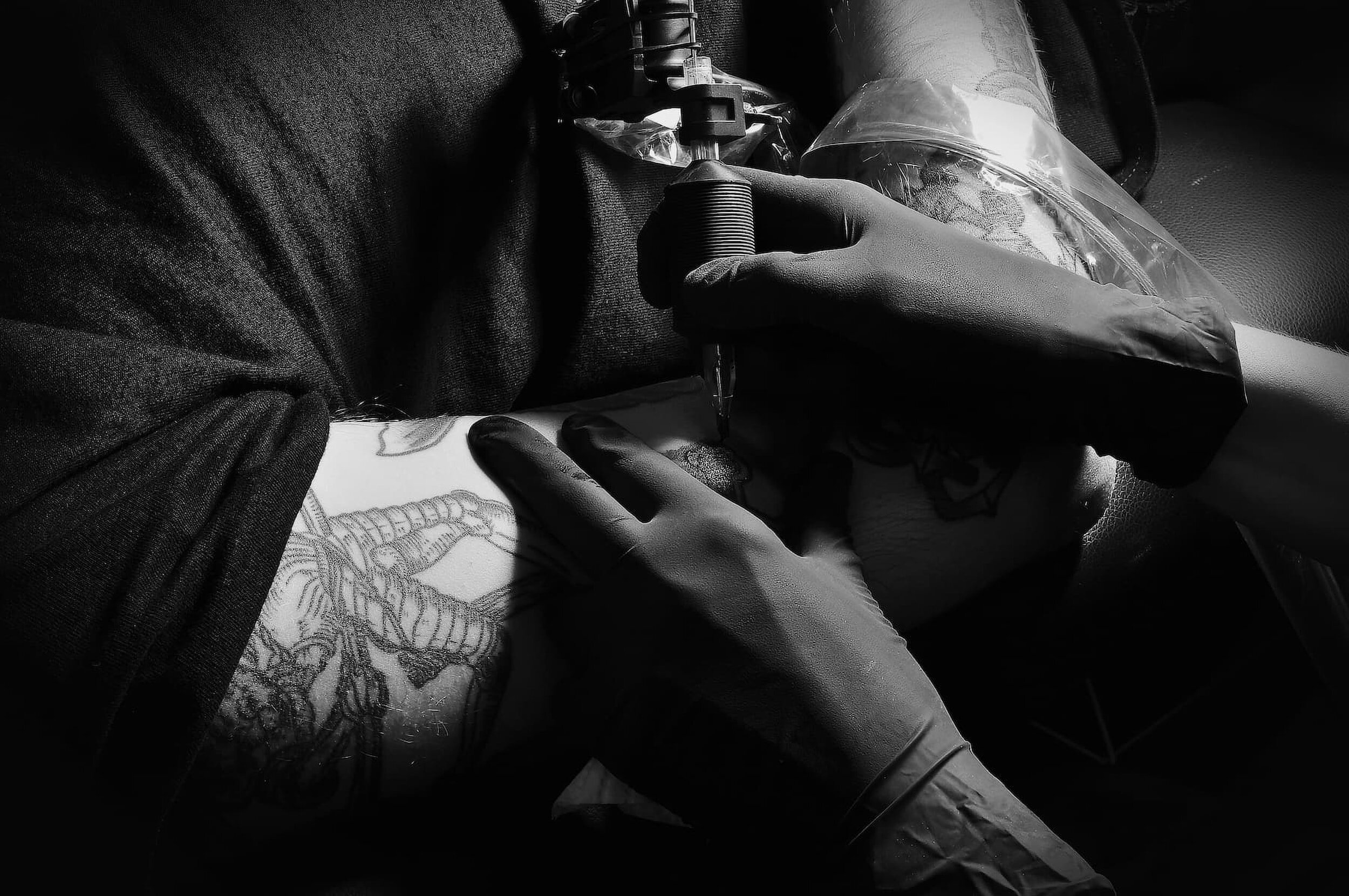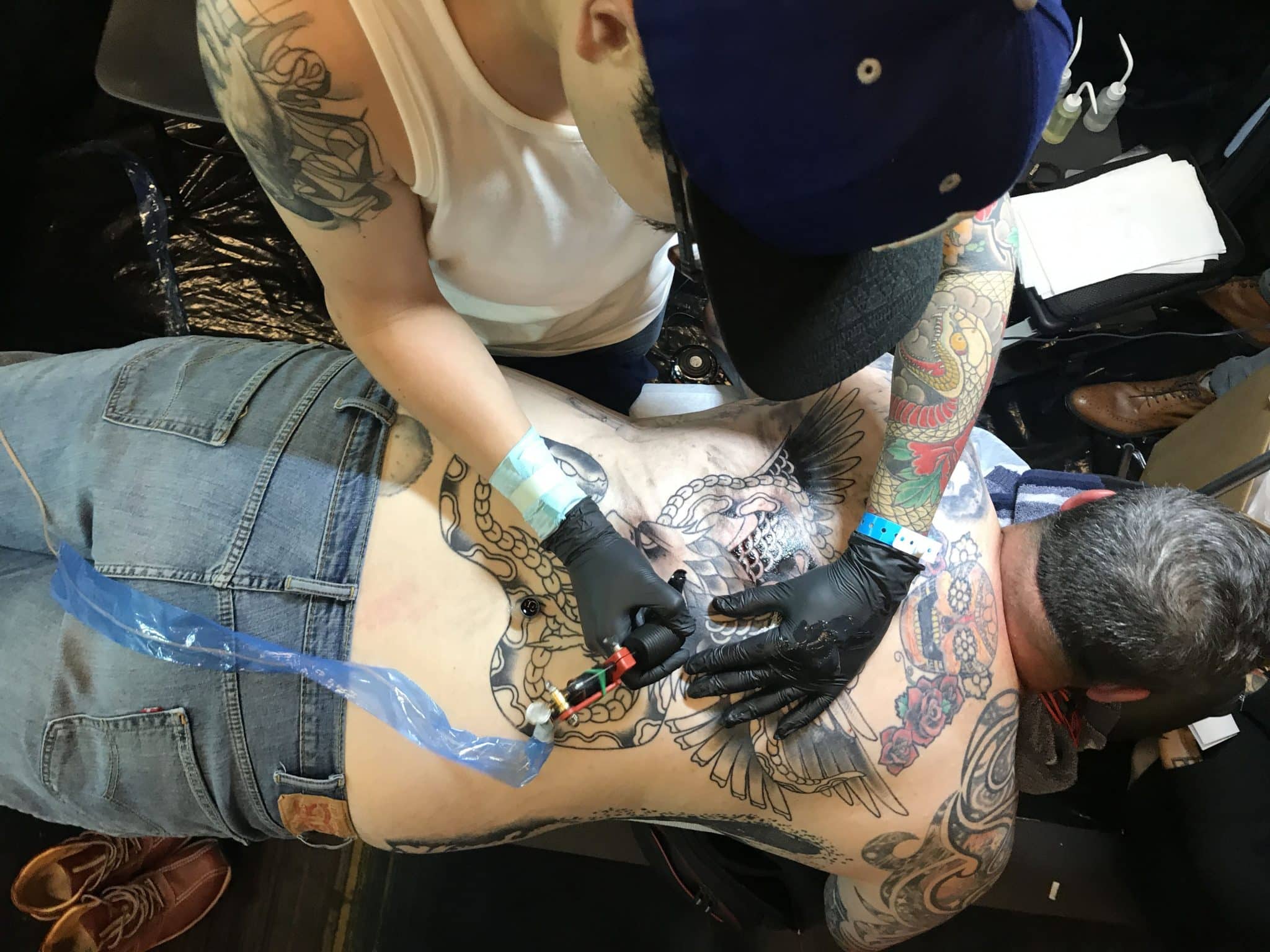We’ve all heard it before. “That sleeve isn’t going to look good when you’re older.” “What about when your skin starts to sag?” “Tattoos don’t age well!” We bat away these harsh words knowing we’ll love our ink, no matter how it ages.
Yet, there is some truth to these words—particularly when your tattoo begins to fade. Maintaining a brilliant tattoo through the years isn’t impossible, but it will take some time and effort.
A Primer on Tattoos
Tattoos introduce black and white or colored ink under the skin through a needle. Depending on your skin type, the complexity of the design, and the tattoo placement, an artist will insert the needle between 1 and 4 mm. Specifically, the needle penetrates the area between the dermis and epidermis. After healing, the transparency on your skin allows the tattoo to remain visible.
How to Prepare for a New Tattoo
Whether anticipating your first or tenth tattoo, a little bit of preparation can go a long way. Before your session, get at least eight hours of sleep to allow your body to manage the pain more effectively.
If your skin is dry, keep it moisturized with a fragrance-free lotion to prevent flakes and dermatological shock. Avoid the following at least 24 hours before your appointment:
- Having your skin cleaned professionally at a dermatological clinic
- Taking medication that could thin your blood
- Consuming alcohol
How to Properly Care for a Healing Tattoo
For a tattoo to remain stunning as it ages, you can’t skimp on aftercare. Maintenance begins as soon as you step out of the salon chair and walk out the doors of your tattoo shop.
After your session, your artist will apply an antibacterial cream onto your skin and wrap the new piece in a breathable plaster. Keep your bandage on for however long your artist advises you to, as it will protect the skin from dust and bacteria.
When removing the plaster, don’t panic if the tattoo doesn’t look like you’d expected—it will likely be secreting excess ink, blood, and plasma. Clean the area with lukewarm water and a neutral pH soap. Instead of allowing the water to run directly on your tattoo, rub it gently with your hands. Allow the area to air-dry or pat it down with a soft microfiber towel.
When dry, apply a scent-free cream or lotion for sensitive skin. Repeat this at least twice a day to keep your ink well-moisturized. If you aren’t sure about what type of product to purchase, you can ask your artist for advice—they might even sell a cream at the salon.
How to Avoid Distortion and Discoloration
When it comes to a healing tattoo, the process isn’t typically a pleasant one. Within the first few weeks of healing, you’ll have to resist the temptation to pick at an itch or peel off any flakes.
Prove the naysayers wrong by keeping your tattoo in good shape with the following tips:
- Avoid swimming in a pool or the ocean until your tattoo finishes healing. Interacting with salt water or chlorine can be detrimental to the affected area.
- Wear loose clothing to allow the skin to breathe.
- Keep your tattoo away from direct sunlight to prevent fading.
- Moisturize the skin daily.
- Avoid playing sports, as you risk exposing the tattoo to natural elements.
Conclusion
Remember, an aging tattoo looks best on well cared for and hydrated skin. By practicing thoughtful aftercare, your sleeve will look stunning even in your later years. At Lucky Deville Tattoo Co, we are among the best Buffalo tattoo shops that never fails to deliver. Our award-winning team of artists has an eye for innovation and loves a one-of-a-kind design.



